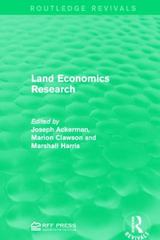Hi, I am doing economics assignment and I am stuck on questions 1d, 2d and q3b. Could you help me?
1. Suppose that the oil market in Utopia is perfectly competitive and that all firms draw oil from a single inexhaustible pool. Each competitor can sell all the oil he or she can produce at $10 per barrel. The average cost of operating a well is $1,000 per year. Total output from the oil field is a function of the number of wells (N) operating in the field = 400 2. a. Calculate the open-access equilibrium in terms of the number of wells and profit. [5 marks] b. Calculate the efficient number of wells and total profit. Illustrate your results (for both (a) and (b)) using a suitably labelled diagram and explain why economic efficiency is preferred. [5 marks] c. Now assume that the government of Utopia wants to encourage expansion of the oil industry and offers a subsidy that effectively reduces the average cost of operating a well to $800 per year. The market price of oil remains at $10 per barrel. Describe the openaccess equilibrium in terms of the number of wells and profit. Compare your answers with those obtained in (a) above; why do they differ? [5 marks] d. A new government is elected in Utopia on a platform of reforming the oil industry. Subsidies are removed immediately. However, it faces the open access equilibrium described in (a) above. Describe, and justify, how you would advise government on transforming the industry from the open access equilibrium to the efficient equilibrium. [15 marks] 2. Farmer A has discovered water under her property. There is only 10m3 of water available in any given year. When it rains, (once a year) the aquifer fills up again and another 10m3 of water becomes available. Water rights are allocated by a \"first-in-time\" rule. Farmer A gets her water right to withdraw 10m3 of water for irrigation. The price of water is zero. Farmer B, A's neighbour, is impressed by the productivity gains of irrigation and also wants access to the water resource. Assume that the (inverse) demand function (willingness to pay) for Farmer A is = 10 and Farmer B is = 10 where X is measured in m3 and w is willingness to pay (price). a. Given the rule of \"first-in-time\" and the price of water, how much water will Farmer A use? Using the above information, describe the advantages and disadvantages of the \"first-intime\" rule. [5 marks] b. What is the efficient allocation of water between Farmer A and Farmer B? Illustrate your result using a suitably labelled diagram. [5 marks] c. Calculate the economic loss associated with Farmer A having the \"first-in-time\" right and Farmer B not having a right to use water. Given Farmer A's initial entitlement to water describe how the efficient outcome might be achieved. [5 marks] d. Starting with farmer A having the initial entitlement to 10m3, assume that water trade is possible and farmer B has to pay the legal fees associated with trade. In this case his demand function is now = 8 1 2 . What is the allocation of water after trade? Explain how transaction costs impact the allocation of water when moving from a situation of \"no trade\" to a situation where trade is allowed. [15 marks] 3. Consider the situation where the products of creative artists - bands, writers, etc - are NOT protected by copyright law. Market demand and supply for these products is represented by = 12 2 and = a. Calculate the market equilibrium for creative work. [5 marks] b. Now assume that there is some leakage - in the form of additional benefits - around the absence of copyright law. The marginal social benefit of creative work is described by = 16 . Note: this includes all benefits at the margin. (i) Calculate the socially optimal level of creative work. Explain why there is a difference between the market equilibrium and the social optima. [5 marks] (ii) Assume that the supply function does not change and government passes copyright legislation that effectively \"leak-proofs\" the products of creative artists. What is the net economic benefit of the leak-proofing legislation? Calculate the change in surplus accruing to the artists and consumers. Illustrate your results using a suitably labelled graph. [15 marks] (iii) If we recognise that \"transaction costs\" (cost of monitoring and enforcing the new law) should be taken into account; at what would transaction costs have to be to make internalisation uneconomic? Justify your answer. [5 marks]







